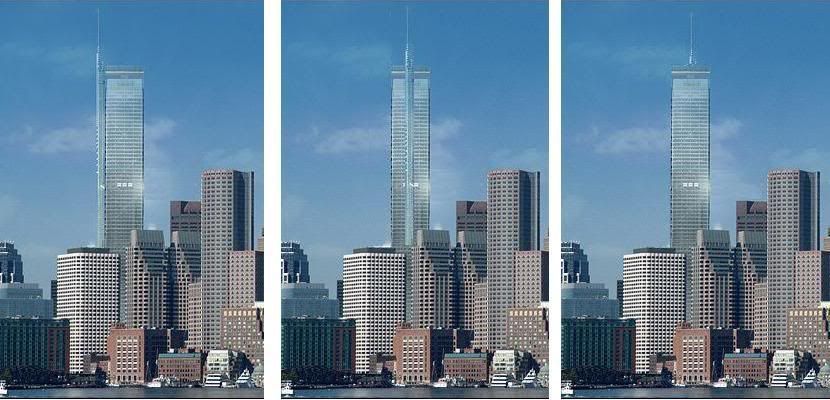Balkin' Belkin
By Steve Bailey, Globe Columnist | December 1, 2006
Welcome home, Steve Belkin.
Now I don't know the man at all, and the only thing I know about the 1,000-foot skyscraper he wants to build downtown is what I read in the newspaper. But I couldn't be happier.
One door closes, and another opens. We lose Frank McCourt to L.A., and Steve Belkin comes home.
My only question: Is a 1,000-foot tower really big enough to accommodate both Belkin and his new partner, Tom Menino? You know it has to get under Belkin's skin to be spending maybe $1 billion and have the thing called "Tommy's Tower." Isn't it always the way?
Belkin and his 1,000-foot tower could be good for years of columns, this being Boston. Consider the circus that has been going on in Atlanta between Belkin and his partners for the last 18 months, where our guy is derided as "Balkin' Belkin," or alternatively "Belkin of Boston."
To recap: Belkin spent more than two decades chasing the rich guy's ultimate dream of owning a pro sports team. He tried and failed to buy the Boston Celtics and the Charlotte Bobcats. And finally, three years ago, he and other investors landed the misfits known as the Atlanta Hawks basketball squad and the Atlanta Thrashers hockey team.
Mayor Menino take note. "Sharing power with the other investors could be a challenge for Belkin, who has been the unquestioned boss in previous ventures," a Boston Globe profile of Belkin noted then. "Another member of the investment group, Maryland publisher Bruce Levenson, said Belkin isn't like business leaders who scrap for control. 'Frankly, when I saw he had been a sole proprietor, that was a concern,' said Levenson. 'But in the year we've worked together it just hasn't proven out. We don't get defensive if we have a disagreement.' "
No, these guys just sue. The whole sorry Belkin v. Everyone Else saga has become a running soap opera in Atlanta.
The fun began in July 2005 when Belkin objected to the Hawks plans to acquire guard Joe Johnson, and said he would use his authority as the team's league governor to block the trade. In a 180-degree change of heart, Levenson called for an ownership vote to toss their Boston partner. Belkin rushed to a Boston court to block his removal. It's been a legal arms race since -- with Belkin out-litigating his partners at every turn.
Belkin agreed to sell out to his partners, but he was clever about it. The price for Belkin's 30 percent stake was to be set by a series of appraisals. Belkin picked the first appraiser, which valued his stake at $88 million. But within a minute of getting the appraisal, Belkin objected to his own appraisal, giving him the right to pick the second appraiser. The second valuation came in much higher at $140 million. More court maneuvering followed, and Belkin kept winning. Under the complicated arrangement, Belkin turned the tables on his partners, winning the right to buy them out -- for the cost of their original investment, a stunning bargain. Appeals are pending.
Writing about the owners has been more entertaining than writing about the mediocre Hawks.
"Here we pause to consider the havoc that Belkin as majority owner could wreak," wrote Atlanta Journal-Constitution columnist Mark Bradley. "He doesn't want to spend money. He doesn't come to games . . . He wants to own a team not because he wants to make it a winner but just so he can say he owns a team."
Echoed columnist Jeff Schultz: "Could he ever attend a home game? He would be less popular than a Hawks player, thought to be a scientific impossibility."
In Atlanta, they call Balkin' Belkin "this litigious man," "cheap and distant and arrogant." In Boston, we call that good copy. Welcome home, Steve Belkin, who through his lawyer, declined to comment.
Steve Bailey is a Globe columnist. He can be reached at
bailey@globe.com or at 617-929-2902.





